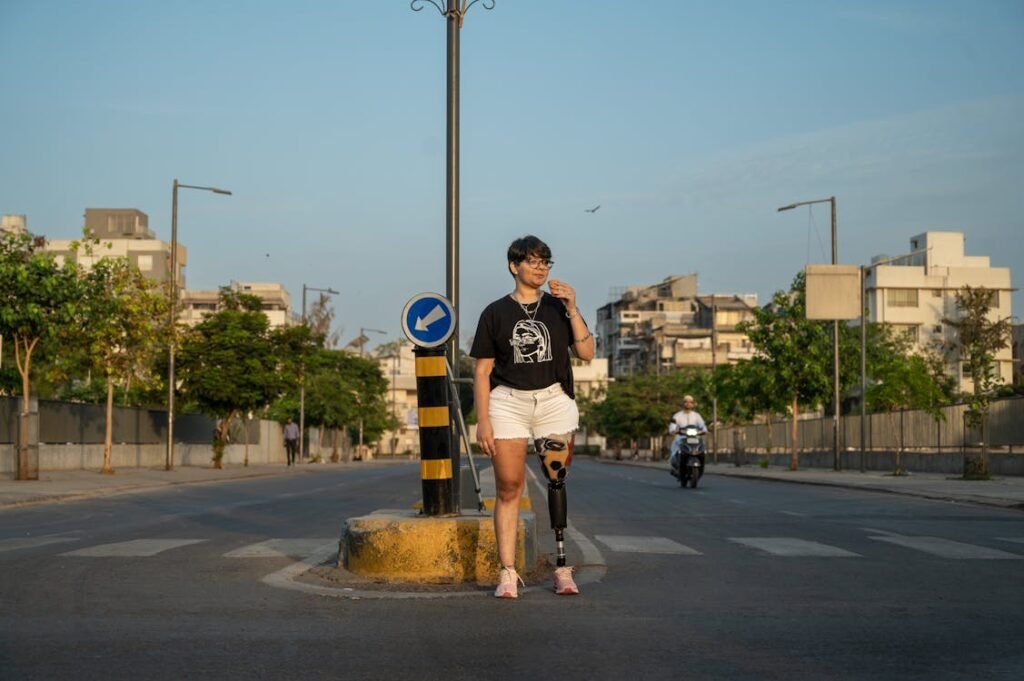Learning to walk again after an amputation is not just about putting one foot in front of the other. It’s about building confidence, balance, and strength from the ground up. For amputees, especially in the early stages of recovery, the way the body moves has to be relearned. Every muscle, every joint, every step matters. And while a prosthetic limb is an important part of that journey, it’s only one piece of the puzzle.
What truly helps amputees regain smooth, stable movement is the right kind of training — and that training is powered by tools and devices that guide the body through proper motion. In 2024, there are more options than ever before. But with so many choices, it can be hard to know which tools actually make a difference.
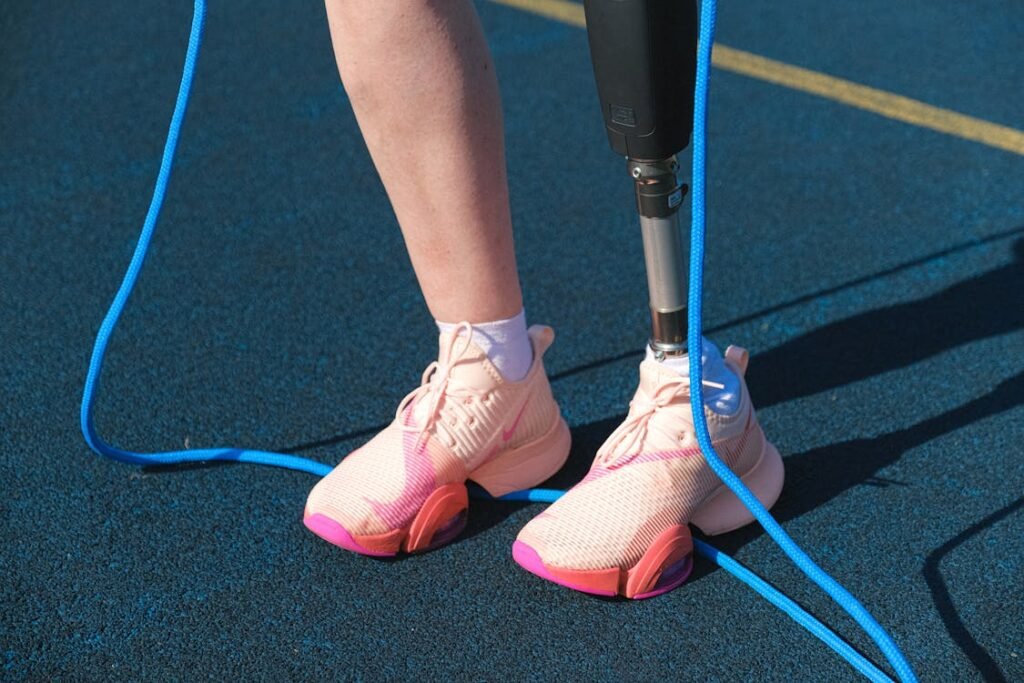
Why the Right Gait Training Tools Matter
More Than Just Walking — It’s About Moving Well
When someone starts using a prosthetic leg, the first goal is to walk again. But walking is just the beginning. What really matters is how that person walks. Is the stride even? Are the hips level? Is the person able to stay balanced without thinking too much? These details make the difference between walking with comfort — and walking with pain or fatigue.
Gait training tools help shape these movement patterns. They don’t just support the body. They guide it, correct it, and teach it what “normal” feels like again. Without the right tools, even the best prosthesis can feel awkward. But with the right tools, a person can gain better control, more confidence, and a more natural walking rhythm — faster and with less frustration.
These devices are not about making rehab fancy or complex. They’re about making it effective. Every tool exists for one reason: to help the user move better, with less effort and more balance. The difference can be life-changing.
Helping the Body Relearn Every Step
When someone loses a leg, their muscles respond differently. The core may become weaker. The hips may start overcompensating. Even the way the shoulders move during walking can shift. The brain also gets confused. It no longer receives signals from the missing limb, and the sense of balance becomes unstable.
Gait training tools step in to bridge this gap. They give the user something reliable to hold, press against, or move with. This helps retrain the brain and body to move as one unit again. Each tool provides structure and feedback that lets the user adjust and improve with every step.
In the beginning, this guidance is critical. Many people don’t even realize they’re walking unevenly. But once they use a tool that shows or corrects the movement, the progress becomes faster. It’s not about pushing harder — it’s about learning smarter.
Some tools focus on balance. Others build strength. Some are used in standing, while others help during walking. But all of them work toward the same goal: safe, pain-free, independent movement.
Why 2024 Is a Turning Point for Gait Training Tools
Technology in prosthetics has come a long way — and now the tools for gait training are catching up too. In the past, rehab often relied only on parallel bars, mirrors, and hands-on correction. These methods still work and are widely used, especially in the early phases. But today’s devices add a new layer of intelligence and precision.
What makes 2024 different is that many new tools can now measure how someone is walking — not just support them. With motion sensors, smart treadmills, pressure mats, and interactive software, users can get real-time feedback about their steps. They can see which foot is landing harder, how long they’re standing on each leg, or how balanced their posture is.
This feedback helps users fix problems before they become habits. It also motivates them by showing visible proof of progress. It’s no longer about guessing what’s wrong. Now it’s about knowing — and correcting — with data, support, and consistency.
At Robobionics, we’ve seen this first-hand. Clinics that use these smart tools often report better results in less time. Patients feel more engaged. Therapists get more precise information. And the entire gait training process becomes more focused, efficient, and enjoyable.
Creating a Supportive Environment for Recovery
Gait training doesn’t happen in isolation. It’s not just about the tool — it’s about the environment. A well-designed rehab space has to be calm, encouraging, and tailored to the individual’s needs. Tools help create this space. They offer structure when the body feels unsteady. They give cues when the mind feels unsure. They provide challenge when the body is ready to grow.
More importantly, they make rehab feel possible. Instead of saying “just walk,” the tool says “walk this way — and here’s how.” That level of support can be the difference between giving up and pushing forward. For many amputees, gait training tools become silent partners — there to guide, never to judge.
They also help therapists do their jobs better. Rather than relying only on observation, therapists can use the data and feedback from these tools to make targeted corrections. This makes each session more impactful and tailored to the person’s progress, ability, and comfort.
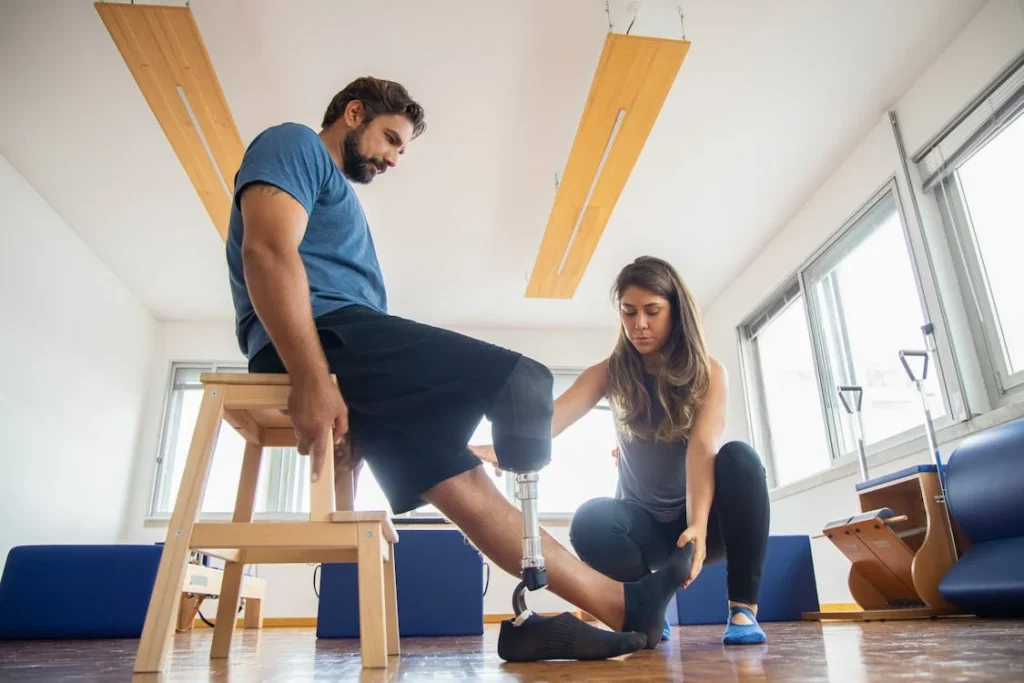
Key Gait Training Tools and Devices in 2024: What’s Making a Difference
Parallel Bars — The Starting Point for Safe Movement
Every journey back to walking typically begins between two sturdy rails. Parallel bars have been a foundational tool in gait training for decades, and for good reason. They offer a simple yet powerful structure that allows the user to stand, shift weight, and take their first steps without fear of falling. In 2024, they are still as relevant as ever — especially for new amputees learning to balance on their prosthetic limb.
What makes parallel bars effective isn’t their complexity. It’s their predictability. They provide a safe, steady grip for both hands, helping the person focus purely on posture, step length, and foot placement. The therapist can stand nearby and guide movement while the user practices slow, controlled steps.
Many rehab centers now pair parallel bars with floor markers or low-resistance stepping obstacles to help users understand step symmetry and foot clearance. These small additions improve coordination and encourage better timing between the sound limb and the prosthetic side. Some setups even have built-in mirrors to give real-time visual feedback — helping the user recognize issues with alignment, weight shifting, or shoulder position as they walk.
Balance Boards and Foam Pads — Building Stability from the Ground Up
Before good gait can happen, balance must be restored. And balance doesn’t begin in the legs — it begins in the core. Devices like balance boards and foam pads challenge the body to stay upright while standing or shifting weight. These tools are incredibly helpful for amputees who tend to favor one side or avoid loading the prosthetic limb fully.
In 2024, balance tools have evolved to support all stages of recovery. Some balance pads are now designed specifically for prosthetic users, offering zones with different firmness levels to challenge stability gently and safely. Others come with visual feedback tools or companion apps to track balance duration and weight distribution over time.
These tools help re-activate the body’s internal stability system. They strengthen the small muscles around the pelvis, spine, and ankles (on the sound limb) and teach the user how to adjust their body position without overreacting. This means fewer falls, fewer wobbles, and a smoother transition into walking over real-world surfaces like grass, gravel, or uneven sidewalks.
The beauty of these tools is how they prepare the body silently. The user may not realize just how much coordination they’re gaining until they find themselves reacting faster and more confidently outside therapy sessions.
Full-Length Mirrors — Instant Visual Feedback That Changes Everything
Seeing is believing. Many amputees don’t realize they are leaning, hiking their hip, or dragging their prosthesis until they see it for themselves. That’s where a full-length mirror becomes more than just a reflection — it becomes a coach.
Mirrors are widely used in rehab settings because they give immediate feedback that words sometimes can’t. A therapist can explain how someone’s gait looks, but when the person sees their posture shift, or their foot land unevenly, the lesson clicks instantly. They can make adjustments in real time and develop a deeper connection with their own movement.
In 2024, more rehab centers are pairing mirrors with floor guides or visual gait cues. These additions show users where their foot should land or how far they should be stepping. Some high-end mirrors now have built-in video playback, allowing users to view their progress over time. This adds both motivation and insight, turning a simple walk into a learning session.
What makes mirrors powerful is that they don’t correct you — they show you. And when someone can see improvement, step by step, their belief in recovery grows stronger.
Treadmills With Bodyweight Support — For Safe, Repetitive Practice
Repetition builds skill — and gait is no exception. But in the early stages of rehab, walking for even a few minutes can be exhausting. That’s where bodyweight-supported treadmills come in. These devices allow amputees to walk with reduced load on their legs, making it easier to build endurance, rhythm, and stride control without fear of falling or overexertion.
In 2024, many of these treadmills come with advanced harness systems that gently lift part of the user’s bodyweight, allowing them to walk longer with less strain. The speed can be adjusted easily, and therapists can control the treadmill based on the user’s energy level and coordination.
Some models even have built-in motion sensors that track step length, stance time, and gait symmetry — giving therapists precise data to guide improvement. These treadmills are especially useful for transfemoral amputees or those with other mobility challenges, where walking unassisted is not yet possible or safe.
With regular use, the treadmill becomes not just a place for walking, but a lab for refining gait. The environment is controlled, the pressure is reduced, and the focus is purely on building a better step — one repeat at a time.
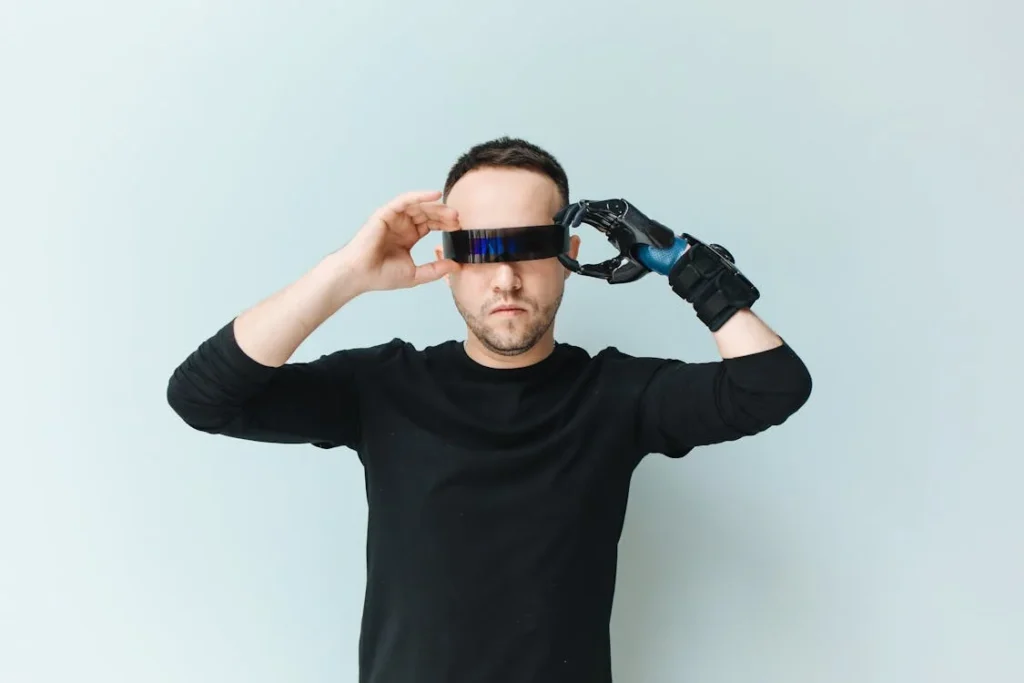
Advanced Gait Training Technologies Transforming Rehab in 2024
Pressure-Sensitive Walkways and Mats — Turning Steps Into Data
One of the most exciting changes in gait training today is the shift from guessing how someone walks to actually measuring it with precision. Pressure-sensitive walkways — sometimes called gait analysis mats — are now found in more clinics and advanced rehab centers than ever before. These slim mats may look simple, but they are packed with technology that gives therapists a clear picture of how every step is performed.
When an amputee walks across the mat, sensors detect how much pressure is placed on each foot, how long each step takes, and how balanced the body is between the two sides. Even things like step length, stride width, and foot rotation can be tracked in real time. The data is then displayed on a screen, often with easy-to-understand visuals and graphs.
This information is more than numbers. It gives the therapist and user a clear starting point. If someone is overloading their sound limb, walking unevenly, or taking shorter steps on one side, the data shows it. Adjustments to prosthetic alignment, posture, or movement strategy can then be made based on actual evidence — not assumptions.
What makes these mats powerful is their ability to show change. After a few weeks of gait training, the user can walk on the mat again and see how much more balanced they’ve become. This progress is motivating, confidence-building, and helpful for refining therapy goals.
Wearable Gait Sensors — Portable Coaching in Real Time
Technology is getting smaller — and smarter. One of the most user-friendly innovations in 2024 is the use of wearable gait sensors. These are small, lightweight devices that can be attached to a user’s shoes, thighs, or waist to measure motion, pressure, and balance during walking. Unlike large treadmills or mats, these sensors can be used in any setting — inside the clinic or outside on a sidewalk.
The beauty of wearable sensors is their ability to monitor walking in natural environments. A person might walk well in therapy, but feel off when walking in daily life. These sensors provide a clearer picture of what’s really happening during regular activity. They can track the number of steps taken each day, time spent on each leg, walking speed, and even how symmetrical each step is.
Some models connect directly to mobile apps, giving both the user and the therapist real-time feedback. For example, if the user is leaning too much to one side or dragging their prosthesis, an alert can appear on the screen, prompting a correction. It’s like having a silent gait coach walking beside you.
These tools are especially helpful for people who live far from rehab centers and want to track their progress at home. They empower users to take charge of their own movement and bring valuable insights to follow-up sessions with their therapist.
Virtual Reality (VR) and Gamified Gait Training
Gait training isn’t always exciting. It can feel repetitive, slow, or emotionally draining — especially when progress is hard to see. In 2024, more rehab centers are tackling this challenge with virtual reality and gamified training systems. These tools transform traditional movement practice into engaging experiences that stimulate both the body and the mind.
A user might step into a virtual world where they walk along a beach, step over tree branches, or follow a path through a forest. As they move, the system records their steps, posture, and balance. This type of immersive training improves focus and makes the sessions feel less clinical.
Other systems use gamified platforms — where users collect points for walking with even stride lengths, maintaining posture, or balancing properly through a series of movements. These platforms add variety, challenge, and even a little fun to therapy. They also keep the user motivated to continue, especially during long recovery phases.
Importantly, these systems aren’t just about entertainment. They’re designed by rehab professionals and often backed by motion-capture tech that provides therapists with highly accurate feedback. The combination of immersive engagement and movement tracking creates an environment where both progress and enjoyment go hand-in-hand.
Robotic Gait Trainers — Precision Movement, Every Step of the Way
For users with more complex needs — such as bilateral amputees, those recovering from stroke and amputation, or users with additional balance challenges — robotic gait trainers are becoming more widely available in 2024. These devices support the body fully or partially while guiding the legs through a controlled walking pattern.
Unlike a treadmill, which requires the user to manage much of the motion themselves, robotic gait trainers provide structure. They help set a rhythm, align the hips and legs, and move the body through a safe, repeatable gait cycle. This repetitive motion helps build muscle memory and retrains the brain to coordinate both sides of the body.
While these machines are more commonly found in large hospitals or specialized centers, their availability in India and other developing rehab ecosystems is growing — thanks to increasing awareness of their benefits and newer, more affordable models entering the market.
For users who feel too weak or unstable to walk on their own, robotic gait systems provide early exposure to walking without the fear of falling. Over time, the support can be reduced, giving the user more independence as they grow stronger. It’s a bridge between early recovery and full mobility — and for many, a turning point in their rehabilitation journey.
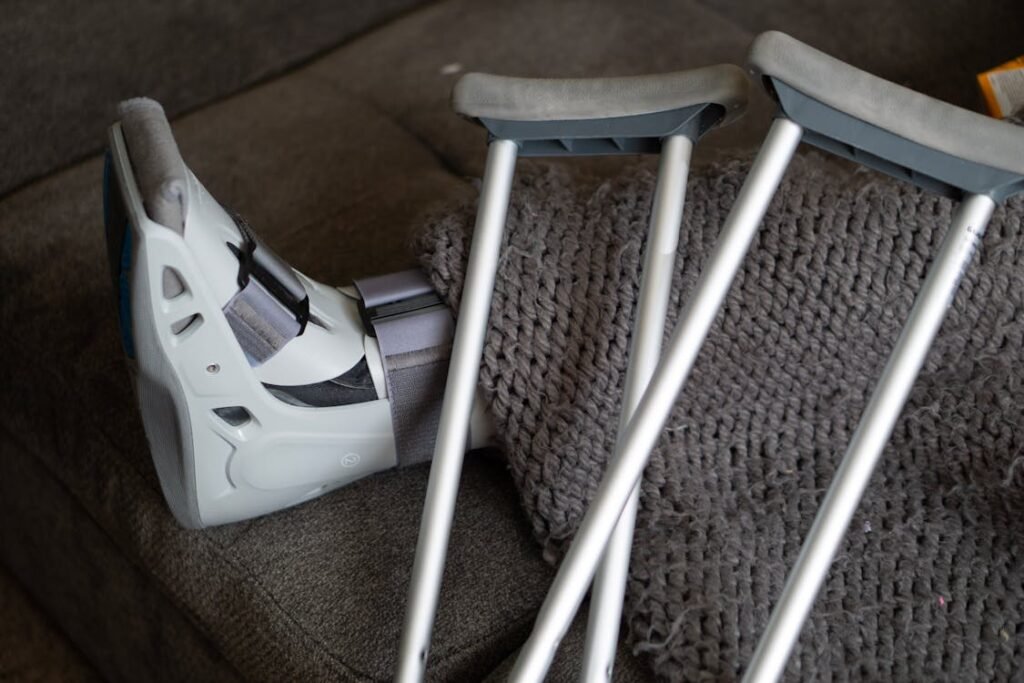
Choosing the Right Tools: How Therapists Match Devices to Each Amputee’s Journey
One Size Doesn’t Fit All — And That’s a Good Thing
No two amputees are alike. Some are young and active, aiming to return to sports or physically demanding jobs. Others may be older, recovering from illness or managing other health conditions alongside limb loss. Some might have above-knee amputations, while others have below-knee. And some may have bilateral limb loss or additional neurological challenges. These differences shape every aspect of gait training — including which tools are used, when, and how often.
That’s why gait training tools are not handed out like checklists. Skilled therapists choose tools based on real, living bodies — their strengths, their limitations, and their goals. They observe how a person stands, how they react to weight shifts, how they place their prosthetic foot on the ground. These details guide the decision-making process far more than the name of the tool itself.
In early rehab, simpler tools are usually best. The focus is on safety, comfort, and relearning basic movement. As the person grows stronger and more stable, more advanced tools — like pressure mats, wearable sensors, or robotic support — can be introduced to refine technique and expand capacity. It’s not about pushing for the most high-tech option. It’s about choosing what works right now for this person.
Matching Tools With Physical Readiness
Before introducing any gait training device, therapists assess a few core things: muscle strength, balance, pain levels, and endurance. For someone who’s still healing or lacks weight-bearing ability on the prosthetic side, standing tools like parallel bars or bodyweight support harnesses may be used to safely begin upright movement without risk.
If the amputee has weak core or hip muscles — common especially in transfemoral amputees — tools that promote static balance and side-to-side weight shifts (like foam pads or balance boards) become the priority. These tools help activate stability muscles and build the foundational control needed before walking practice can even begin.
Once the person is able to walk with support and their posture begins to improve, that’s when dynamic feedback tools — such as visual cues, mirrors, or real-time pressure sensors — become effective. At this point, training moves from basic mobility to refining gait patterns, correcting asymmetries, and reducing compensations that could lead to joint pain later.
This progression is never rushed. A great therapist knows when to introduce challenge — and when to hold back. They watch the user closely and adapt the tools, not the other way around. In this way, gait training becomes a customized experience, not a standardized routine.
Catering to Emotional and Cognitive Readiness
Physical ability isn’t the only factor in tool selection. Emotional readiness plays a major role, especially in the early weeks after amputation. Many people arrive at rehab feeling anxious, unsure, or even fearful of walking again. The idea of stepping with a prosthesis can feel unnatural or even unsafe. In such cases, therapists may begin with the simplest, most familiar tools — like parallel bars — to help users feel grounded and supported.
Confidence-building tools, such as mirrors or small-step platforms, are often introduced gradually. These allow users to see and feel their progress without overwhelming them. Tools that feel “too technical” may be avoided at first, especially if they distract the user from focusing on their own body awareness.
Cognitive readiness is also essential. For users recovering from trauma, stroke, or with limited attention span, gait tools need to be simple, tactile, and intuitive. Devices with excessive data or complicated interfaces can confuse rather than help. In such cases, therapists rely more on visual and sensory feedback — letting the body learn through feel rather than numbers.
As confidence and understanding grow, therapists may introduce more interactive tools. For example, some users may respond positively to gamified walking platforms or virtual feedback systems. These not only improve motivation but also challenge the brain in ways that support long-term neuromuscular recovery.
Setting Realistic Goals, Then Adjusting Along the Way
Gait training doesn’t end in a week or a month. It’s a long journey that unfolds in stages. And the tools used along that journey must change too. What’s effective in the beginning may become unnecessary later. And what seemed too advanced at first may become the perfect fit six weeks down the road.
Therapists know this. That’s why they often re-assess gait patterns regularly. They might observe a user walking over different surfaces, turning, stopping, or climbing stairs. Each situation reveals something new. Based on these observations, tools are rotated in and out of the routine. This keeps training fresh, focused, and appropriate for the person’s current level.
At Robobionics, we’ve seen how this flexible, person-first approach leads to the best results. Tools don’t work in isolation. They work when paired with thoughtful planning, deep listening, and real collaboration between the therapist and the user. That’s how pain is avoided. That’s how confidence grows. And that’s how gait becomes not just functional — but fluid, stable, and natural.
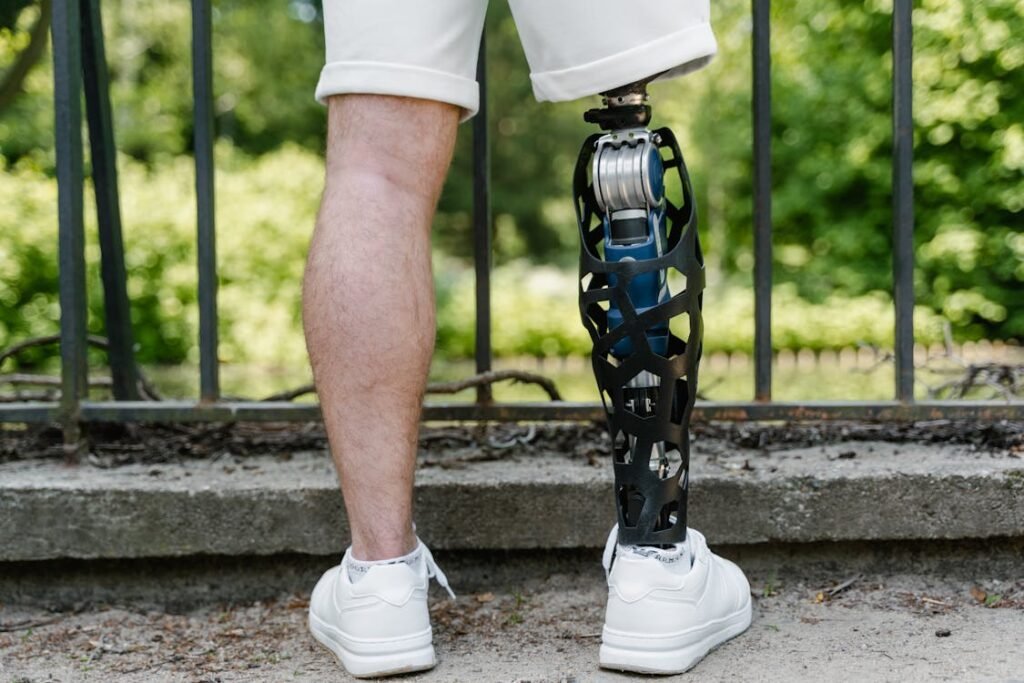
Bringing Gait Training Home: Tools and Tips for Real-World Use
Why Gait Training Shouldn’t End When Therapy Sessions Do
Most amputees attend physical therapy a few times a week — sometimes less. But the body doesn’t stop moving in between sessions. The real challenge begins outside the clinic, at home, in crowded streets, or on uneven ground. That’s where walking becomes real — and where pain, imbalance, or poor movement patterns can quietly creep back in.
That’s why continuing gait training at home is so important. It doesn’t have to be complicated or high-tech. It just needs to be consistent. Even simple tools and movements can help reinforce proper alignment, build strength, and prevent bad habits from forming. With the right approach, gait training can continue as a part of daily life — not just something that happens at rehab.
Home-Friendly Tools That Really Make a Difference
Not every amputee has access to a full clinic with robotic treadmills or gait labs. But that doesn’t mean training has to stop. In fact, many effective gait training tools are affordable, portable, and easy to use at home — even in small spaces.
One of the most basic but powerful tools is a mirror. A full-length mirror placed in a hallway or near a wall can help users observe their posture, foot placement, and shoulder position while walking. It’s a form of self-feedback that encourages body awareness and small corrections with every step.
A foldable foam balance pad can be used on the floor for daily standing practice. Simply standing on the pad for a minute or two while trying to stay centered builds ankle and hip stability. Over time, this helps reduce small stumbles and strengthens the prosthetic side.
A rubber resistance band is another simple but effective item. With guidance from a therapist, users can perform seated or standing movements to activate the core, glutes, or hip flexors. These exercises directly support better control during walking — especially during the weight-shifting phase.
Some users even repurpose everyday furniture for support. A sturdy kitchen counter or chair back can serve as a stand-in for parallel bars. Practicing side steps, mini-squats, or static balance at home, for just a few minutes daily, keeps the body tuned and the gait pattern steady.
Using Mobile Technology and Apps to Stay on Track
In 2024, smartphone-based gait tracking apps are becoming more accessible and user-friendly. Some prosthetic users now wear simple sensors or step counters connected to an app that shows how many steps they’ve taken, how balanced their movement is, and even how much time they spend on each foot.
These tools are especially useful for tracking progress over time. For users in rural areas or those unable to visit rehab centers regularly, they also offer a way to stay connected with their therapist remotely. Some apps allow for data sharing, video feedback, and even virtual sessions — keeping users accountable and engaged without leaving home.
At Robobionics, we’ve seen users who combine this simple tech with basic home routines achieve faster, more lasting results than those who rely solely on in-clinic visits. The key is regular movement and real-time feedback, no matter where it happens.
Role of Caregivers in Supporting Gait Practice
Recovery is never a solo journey. Spouses, family members, or even close friends often become informal caregivers — and they play a huge role in gait training outside the clinic. But supporting someone during gait training doesn’t mean taking over or correcting every move. It means creating an environment where practice is safe, stress-free, and encouraged.
Caregivers can help by observing quietly, giving space when needed, or gently pointing out shifts in balance or posture. They can also assist with setting up equipment, providing a steady arm for confidence, or helping users follow through on exercises recommended by therapists.
What matters most is patience. Gait improvement takes time, and progress may be slow or uneven. But with consistent encouragement and support, even small steps forward at home can lead to major gains in confidence, strength, and pain-free walking over time.
When to Check In With a Therapist
Just because training happens at home doesn’t mean it should happen in isolation. It’s important for users to check in with their therapist regularly, especially if something feels off. A small change in socket fit, posture, or comfort can affect the entire gait pattern.
Video calls, in-person check-ups, or even sending gait videos to a professional can help catch issues early. Therapists can recommend new tools, tweak exercises, or help realign the prosthesis — all of which keep gait training effective and safe.
Staying connected doesn’t always require a trip to a center. In many cases, a short consultation is enough to prevent weeks of discomfort or confusion. And when gait training stays on track — even at home — pain stays away, progress stays visible, and walking becomes a source of freedom again.
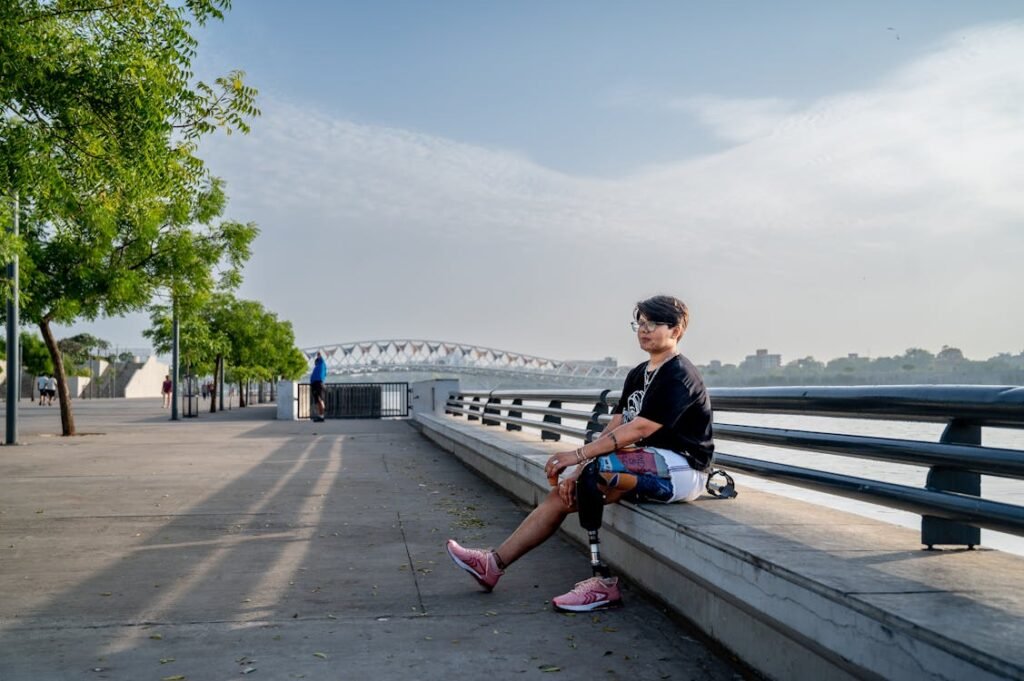
The Future of Gait Training: Personalization and Inclusion in 2024 and Beyond
Why Personalization Is the Next Frontier
Gait training has always been personal — because every step is shaped by the user’s body, mind, and life experience. But in the past, personalization was limited by what therapists could see and feel. Now, with smarter devices, adaptive tools, and better data, gait training in 2024 is shifting toward full customization, right down to the individual’s needs, goals, and lifestyle.
Tools today can be adjusted not just for height or weight, but for walking habits, terrain preference, pace, energy levels, and even emotional readiness. For example, some smart treadmills can now auto-adjust their speed or tilt based on how steady the person feels — creating a training environment that responds in real time. Wearables can be programmed to vibrate gently if the user’s posture shifts off-center, offering subtle cues rather than loud alarms.
This kind of subtle, body-aware technology means that gait training doesn’t have to push people — it can grow with them. It makes recovery feel safer, more human, and far more effective. For people who may have struggled with traditional rehab methods, this gentle personalization offers a more welcoming way to rebuild confidence, step by step.
Addressing the Needs of India’s Diverse Populations
India is a land of contrasts — from busy urban metros to remote rural villages, from tech-savvy youth to elderly individuals steeped in tradition. The best gait training tools in 2024 are starting to reflect this diversity by becoming more accessible, flexible, and affordable for everyone, not just those in large hospitals or private rehab centers.
At Robobionics, we’ve worked in both high-tech clinics and resource-limited rural setups. One thing we’ve learned is that effective gait training doesn’t depend on cost or complexity — it depends on cultural fit, simplicity, and user trust. That’s why we’re seeing growing interest in low-tech tools with high impact, such as adjustable portable parallel bars, durable home-use balance boards, and phone-based gait tracking apps that work even offline.
In community clinics or rural hospitals, therapists are now combining traditional methods with modern insights — using mirrors, voice cues, and tactile feedback alongside app-based tracking or even AI-supported video analysis. The goal is not to mimic Western systems — it’s to create tools that respect the user’s environment, language, and values.
For example, gait tools that use visual symbols instead of written English can help elderly users or those with lower literacy follow training without confusion. Tools that connect to affordable Android devices — common in Indian homes — are more likely to be used consistently. These adaptations don’t compromise on quality; they enhance usability.
Inclusive Design for All Body Types and Abilities
One major improvement in 2024 is the rise of gait tools that consider different body types, abilities, and prosthetic variations. For a long time, many rehab devices were designed around a standard body size or walking speed. But this excluded many users — especially women, older adults, or people with multiple disabilities — from full participation.
Today’s tools are more adaptable. Balance pads come in different firmness levels. Support harnesses are available in multiple sizes with easy-fit buckles. Gait analysis systems can now track very slow walking speeds — essential for older adults or new users just learning to walk again. Even virtual feedback tools can be adjusted for visibility, color contrast, or interface simplicity to support those with visual impairments or cognitive challenges.
This focus on inclusive design doesn’t just help “special cases.” It benefits everyone. It reminds us that mobility is not about being perfect — it’s about being supported. When tools are built for all kinds of users, more people engage with them, stay motivated, and ultimately walk more safely.
Community-Led Gait Education: A Rising Movement
Alongside high-tech solutions, there’s a powerful movement happening across India — where rehab professionals, NGOs, and local clinics are bringing gait training tools directly to communities. These mobile outreach programs use transportable kits of mirrors, foam pads, guidance apps, and low-cost prosthetics to teach people how to walk better, right where they live.
This community-based approach works especially well for users who cannot travel, or who feel intimidated by hospitals. It also encourages peer learning — where amputees train together, observe each other, and share tips. The social bond adds motivation and reduces feelings of isolation.
In this model, gait training tools are not locked in a clinic. They become part of everyday life — used in schools, temples, local halls, or even homes. This grassroots expansion is one of the most promising developments of 2024. It brings movement, independence, and dignity to people who might otherwise have been left behind.
Conclusion
Gait training is more than a clinical step toward recovery — it’s a pathway to reclaiming movement, independence, and dignity. In 2024, amputees don’t have to face that journey alone or guess their way through it. Today’s gait training tools are smarter, more supportive, and more human than ever before. Whether it’s a simple mirror in a small home, a wearable sensor tracking each step, or a robotic system guiding movement in a high-tech clinic, the purpose remains the same: to help every amputee move with balance, confidence, and comfort.
At Robobionics, we believe that walking isn’t just about reaching a destination. It’s about how you feel with every step. The right tool at the right time can mean the difference between pain and progress, fear and freedom. And the most effective tools are the ones that meet you where you are — in body, in spirit, and in daily life.
As we look ahead, we see a future where no amputee is limited by access, environment, or outdated systems. Gait training is evolving — becoming more personal, more inclusive, and more powerful. And with the right support, every amputee in India and beyond can walk not just again — but better than ever.



